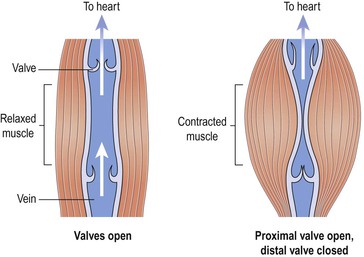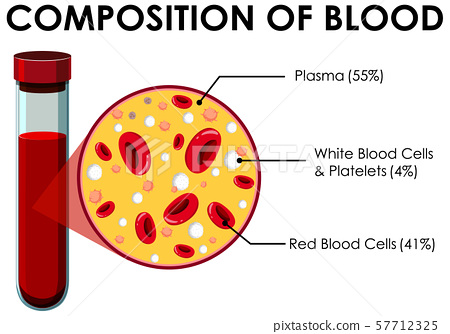
CardioVascular Notes
CardioVascular notes
Important Terms:
Myocardium: Specialized muscle tissue (cardiac muscle) that forms the heart. The heart is considered a “double pump” that is divided into the right and left sides.
Pulmonary circulation: The main function of the right side of the heart is to pump deoxygenated blood, which has just returned to the body, to the lungs.
Systemic circulation: The role of the left side of the heart is to pump oxygenated blood, which has just returned from the lungs to the rest of the body
Arteries and Veins:
Arteries are blood vessels that carry blood away from the heart. In the systemic circulation, arteries carry oxygenated blood from the left side of the heart toward body tissues. In pulmonary circulation, arteries carry deoxygenated blood from the right side of the heart toward the lungs.
Veins are blood vessels that carry blood toward the heart. In systemic circulation, veins carry deoxygenated blood toward the right side of the heart from body tissues. In pulmonary circulation, veins carry oxygenated blood toward the left side of the heart
Other vascular structures
Arterioles: Arterioles are vessels in the blood circulation system that branch out from arteries and lead to capillaries, where gas exchange eventually occurs. Surrounded by smooth muscle, arterioles are the primary site of vascular resistance.
Capillaries: The smallest of the blood vessels, capillaries help to enable the exchange of water, oxygen, carbon dioxide, and other nutrients and waste substances between the blood and the tissues of the body.
Systolic and Diastolic Blood Pressure: When blood pressure is reported or measured, it is often stated as being the systolic pressure over the diastolic pressure (e.g., 120/80 mmHg).
Systolic blood pressure: refers to the maximum pressure observed in the arteries during the contraction phase of the ventricle (e.g., 120 mmHg).
Diastolic blood pressure: the minimum pressure observed in the arteries during the relaxation phase of the ventricle (e.g., 80 mmHg).
Atria and Ventricles:
Atria and Ventricles The heart is made up of four chambers (two sides). The upper chambers are called atria (singular atrium), and the lower chambers are called ventricles. Blood is received into the atria and pushed out from the ventricles.
Structure of the heart:

The cardiac cycle:
The Cardiac Cycle: The cardiac cycle is a series of events that occurs through one heartbeat. During this cycle, there is both a phase of relaxation (diastole), in which the ventricle is filling with blood and a phase of contraction (systole), in which the heart contracts and ejects the blood.
Blood pressure is the force exerted by the blood against the walls of the arteries and other vascular vessels. Blood pressure in each of the two phases—diastole and systole—is measured in millimeters of mercury (abbreviated as mmHg).
Skeletal Muscle Pump: The low pressure within the veins causes a problem for the cardiovascular system. The skeletal muscle pump aids in the return of blood back to the heart through the veins. With each contraction of the skeletal muscle, blood is pushed back to the heart.

The Composition of Blood:
 The Flow of Blood through the Heart:
The Flow of Blood through the Heart:
Blood is delivered to the right atrium from the superior and inferior vena cava. It passes through the tricuspid valve and enters the right ventricle. From there, the blood is pumped through the pulmonary semilunar valve and out through the pulmonary arteries to the lungs.
The blood returns from the lungs through the pulmonary veins to the left atrium. It then passes through the bicuspid valve and enters the left ventricle. The blood is then pumped out through the aortic semilunar valve into the aorta and throughout the systemic circulation.
Tracking the flow of blood through the heart:

Summary:
In its function as a “double pump,” the heart pushes oxygenated blood to the body and deoxygenated blood to the lungs. Blood flows from the heart through arteries and back to the heart through veins.
CardioVascular Notes
CardioVascular notes
Important Terms:
Myocardium: Specialized muscle tissue (cardiac muscle) that forms the heart. The heart is considered a “double pump” that is divided into the right and left sides.
Pulmonary circulation: The main function of the right side of the heart is to pump deoxygenated blood, which has just returned to the body, to the lungs.
Systemic circulation: The role of the left side of the heart is to pump oxygenated blood, which has just returned from the lungs to the rest of the body
Arteries and Veins:
Arteries are blood vessels that carry blood away from the heart. In the systemic circulation, arteries carry oxygenated blood from the left side of the heart toward body tissues. In pulmonary circulation, arteries carry deoxygenated blood from the right side of the heart toward the lungs.
Veins are blood vessels that carry blood toward the heart. In systemic circulation, veins carry deoxygenated blood toward the right side of the heart from body tissues. In pulmonary circulation, veins carry oxygenated blood toward the left side of the heart
Other vascular structures
Arterioles: Arterioles are vessels in the blood circulation system that branch out from arteries and lead to capillaries, where gas exchange eventually occurs. Surrounded by smooth muscle, arterioles are the primary site of vascular resistance.
Capillaries: The smallest of the blood vessels, capillaries help to enable the exchange of water, oxygen, carbon dioxide, and other nutrients and waste substances between the blood and the tissues of the body.
Systolic and Diastolic Blood Pressure: When blood pressure is reported or measured, it is often stated as being the systolic pressure over the diastolic pressure (e.g., 120/80 mmHg).
Systolic blood pressure: refers to the maximum pressure observed in the arteries during the contraction phase of the ventricle (e.g., 120 mmHg).
Diastolic blood pressure: the minimum pressure observed in the arteries during the relaxation phase of the ventricle (e.g., 80 mmHg).
Atria and Ventricles:
Atria and Ventricles The heart is made up of four chambers (two sides). The upper chambers are called atria (singular atrium), and the lower chambers are called ventricles. Blood is received into the atria and pushed out from the ventricles.
Structure of the heart:

The cardiac cycle:
The Cardiac Cycle: The cardiac cycle is a series of events that occurs through one heartbeat. During this cycle, there is both a phase of relaxation (diastole), in which the ventricle is filling with blood and a phase of contraction (systole), in which the heart contracts and ejects the blood.
Blood pressure is the force exerted by the blood against the walls of the arteries and other vascular vessels. Blood pressure in each of the two phases—diastole and systole—is measured in millimeters of mercury (abbreviated as mmHg).
Skeletal Muscle Pump: The low pressure within the veins causes a problem for the cardiovascular system. The skeletal muscle pump aids in the return of blood back to the heart through the veins. With each contraction of the skeletal muscle, blood is pushed back to the heart.

The Composition of Blood:
 The Flow of Blood through the Heart:
The Flow of Blood through the Heart:
Blood is delivered to the right atrium from the superior and inferior vena cava. It passes through the tricuspid valve and enters the right ventricle. From there, the blood is pumped through the pulmonary semilunar valve and out through the pulmonary arteries to the lungs.
The blood returns from the lungs through the pulmonary veins to the left atrium. It then passes through the bicuspid valve and enters the left ventricle. The blood is then pumped out through the aortic semilunar valve into the aorta and throughout the systemic circulation.
Tracking the flow of blood through the heart:

Summary:
In its function as a “double pump,” the heart pushes oxygenated blood to the body and deoxygenated blood to the lungs. Blood flows from the heart through arteries and back to the heart through veins.
 Knowt
Knowt
